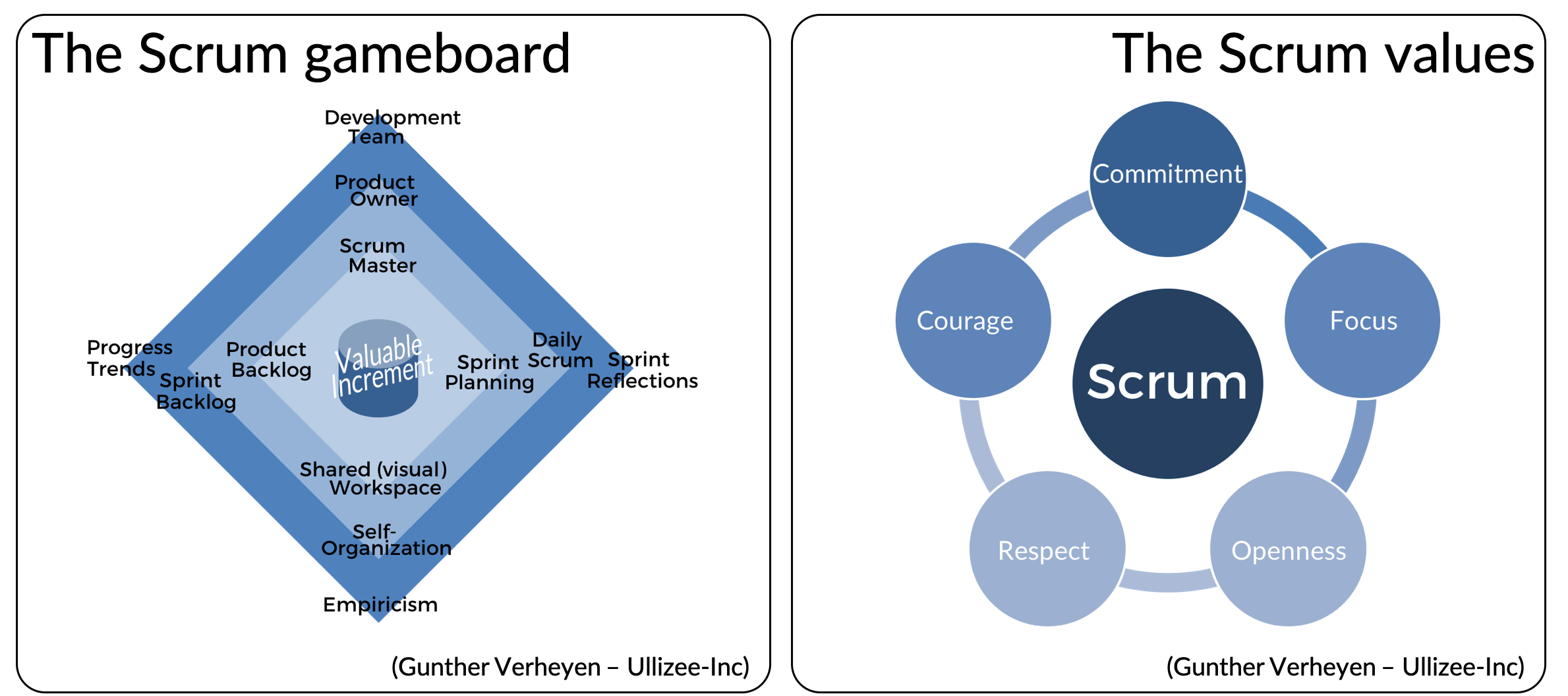I call myself a Scrum Caretaker. I aspire inspiring people using Scrum. I prefer sharing positive experiences and cases that demonstrate how amazing working with Scrum can be, what problems can be tackled and how, the level of excellence we can build into our products, how Scrum can engage people. Ultimately I hope to help people employ Scrum to re-humanize their workplace, together with many engaged Scrum practitioners across the world that care too.
But it regularly dawns on us — the many, many misconceptions that exist over Scrum. We feel provoked to try to correct the recurring and worrying interpretations of Scrum that are out there. Sometimes that is fun. Often it is not. It can be energizing. In general it drains us. A few lifetimes can be spent fighting that battle. We limit the energy spent ‘fighting’ to keep room for ‘constructing’.
A good place to start is reminding people of what ought to be in place according to Scrum. It provides clarity over what is mandatory in Scrum (and therefore, what is not).

Unlocking the benefits of Scrum requires however a lot more than just knowing what Scrum consists of. Scrum is the foundation to a complex adaptive system (‘CAS’) producing results that cannot be attributed to its individual components separately, but to the collective only. Unlocking the benefits of Scrum depends more on the way the whole of Scrum is being used, through the rules that bind its constituent parts together. Unlocking the benefits of Scrum depends even more on what the people practicing Scrum do, more than what they know or say in the name of theory. It depends on how people interact within the framework, the conversations they have.
Here are 10 questions to help you assess that aspect of Scrum. What you do with the 11 formally mandated elements of Scrum? Can you say ‘yes’ to each question?
- The accountabilities of Product Owner, Development Team(s) and Scrum Master are identified and fulfilled?
- Work is organized in consecutive Sprints of 4 weeks or less?
- There is an ordered Product Backlog?
- There is a Sprint Backlog with a visualization of remaining work for the Sprint?
- At Sprint Planning a forecast, Sprint Backlog and a Sprint Goal are created?
- The result of the Daily Scrum is work being re-planned for the next day?
- No later than by the end of the Sprint a Done Increment is created?
- Stakeholders offer feedback as a result from inspecting the Increment at the Sprint Review?
- Product Backlog is updated as a result of Sprint Review?
- Product Owner, Development Team(s) and Scrum Master align on their work process for the next Sprint at the Sprint Retrospective?
Minimally, make sure that you remain aligned (6) and that you regularly check what else might be needed (10). Upon that foundation, grow towards saying ‘yes’ to all questions. If you don’t overthink your way of working along that road of expansion and evolution, you might find Scrum to be of a bare essence actually.
Do know that understanding that Scrum requires 11 elements to be in place is hardly the beginning. My 10 questions might help you better understand how they relate to each other. Find yourself at the beginning still. Separate rules from tactics (to play the game). Understand how all of the Scrum elements serve empiricism, the act of regular inspection and adaptation, and how inspection without adaptation makes no sense in a world of Scrum. Use it also to explore different tactics.
My Scrum Gameboard not only represents the 11 mandatory elements, but also 3 principles underlying Scrum. Understand how the Scrum Values drive behavior.

. . .
Originally published at http://guntherverheyen.com.
